In 1773, Doctor John Latham, then living nearby in Dartford, discovered a previously unknown bird on Bexley Heath. The species has since been named the Dartford Warbler or the Furze Wren, as it prefers to nest in furze bushes.
Prints and text about The Furze Wren.
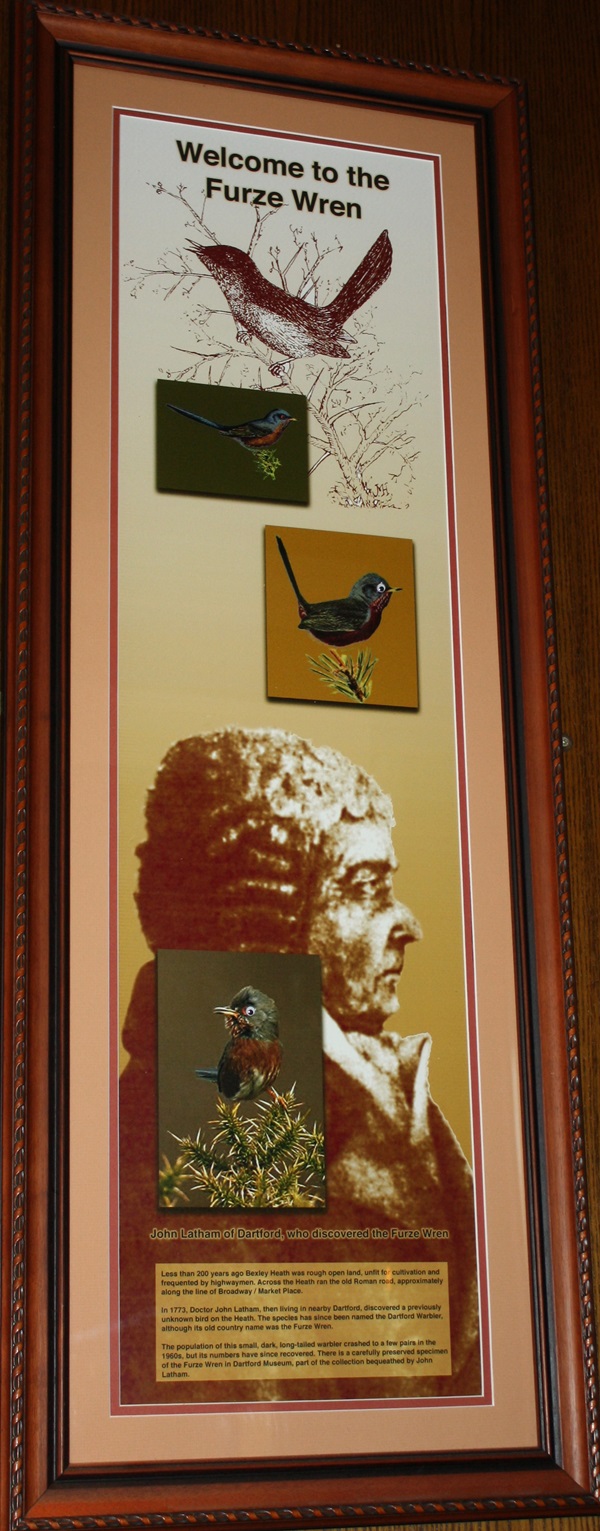
The text reads: Less than 200 years ago Bexley Heath was rough open land, unfit for cultivation and frequented by highwaymen. Across the Heath ran the old Roman road, approximately along the line of Broadway/ Market Place.
In 1773, Doctor John Latham, then living in nearby Dartfod, discovered a previously unknown bird on the Heath. The species has since been named the Dartford Warbler, although its old country name was the Furze Wren.
The population of this small, dark, long-tailed warbler crashed to a few pairs in the 1960s, but its numbers have since recovered. There is a carefully preserved specimen of the Furze Wren in Dartford Museum, part of the collection bequeathed by John Latham.
Prints and text about Lord Bexley at Foots Cray Place.

The text reads: Until it was demolished in 1979, there was a pub in the Market Place named Lord Bexley Arms. This recalled the only man ever to bear that title, Nicholas Vansittart, who lived at Foot’s Cray Place, a Palladian mansion of 1754, complete with dome and cupola. Son of a Dutch Governor of Bengal, Cray Place, later owned by Lord Waring, was burnt down in 1949.
Left: Nicholas Vansittart, Lard Bexley
Above: Foots Cray Place.
Photographs and text about Market Place.
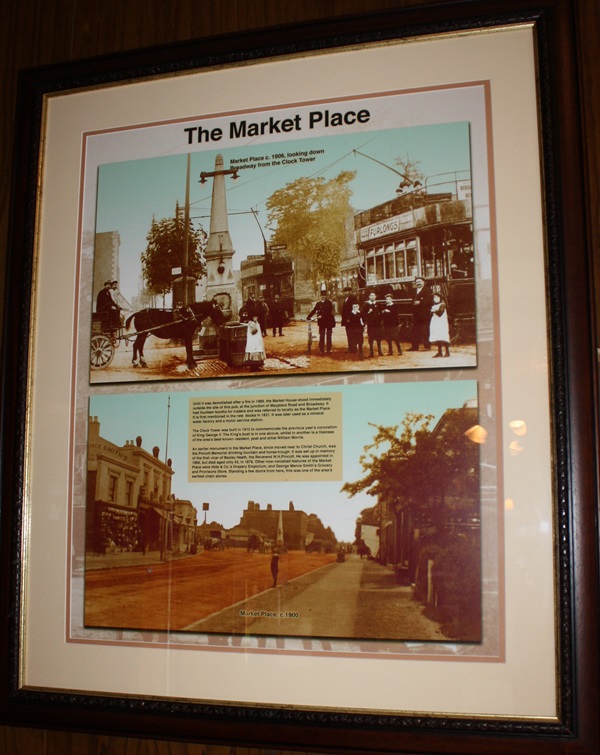
The text reads: Until it was demolished after a fire in 1989, the Market House stood immediately outside the site of this pub, at the junction of Mayplace Road and Broadway. It had fourteen booths for traders and was referred to locally as the Market Place. It was later used as a mineral water factory and a motor service station.
The Clock Tower was built in 1912 to commemorate the previous year’s coronation of King George V. The King’s bust is in one alcove, whilst in another is likeness of the area’s best-known resident, poet and artist William Morris.
An earlier monument in the Market Place, since moved near to Christ Church, was the Pincott Memorial drinking fountain and horse-trough. It was set up in memory of the first vicar of Bexley Heath, the Reverend W.H. Pincott. He was appointed in 1866, but died aged only 43 in 1873. Other now-vanished features of the Market Place were Hide & Co.’s Drapery Emporium, and George Mence Smith’s Grocery and Provisions Store. Standing a few doors from here, this was one of the area’s earliest chain stores.
A photograph of Mayplace Road West, c1900, looking down on what became the site of the Furze Wren.
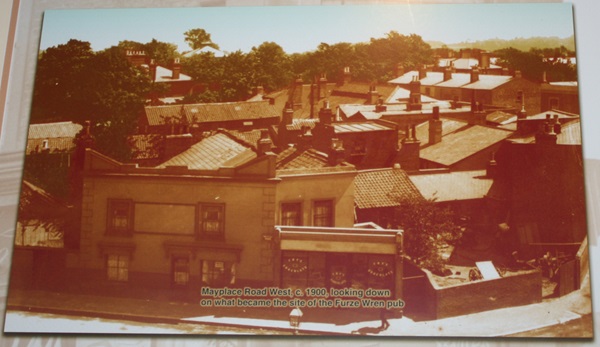
Photographs of transport in Bexleyheath.
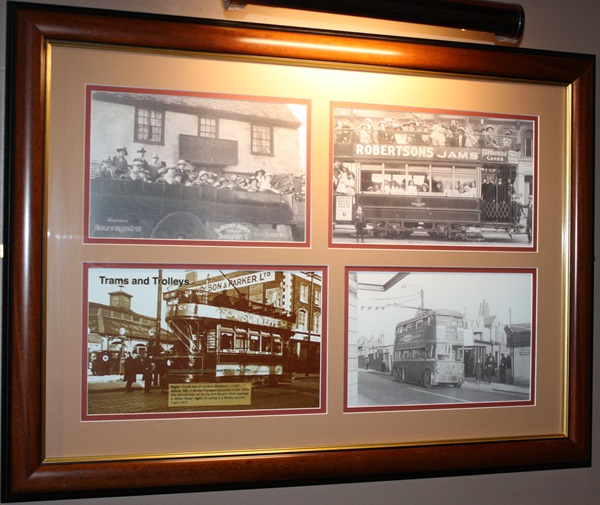
Right: A trolly bus en route to Woolwich, c1945
Above: left, A Bexley Transport excursion in the 1920s (the Service was run by the firm Margo’s from a garage in Albion Road) right, An outing in a Bexley Council Tram, 1910.
A photograph of the Market House, being used as a garage, outside Penny, Son and Parker, whose shop stood on this site, c1900.

Photographs of old cinemas and theatres in Bexleyheath.
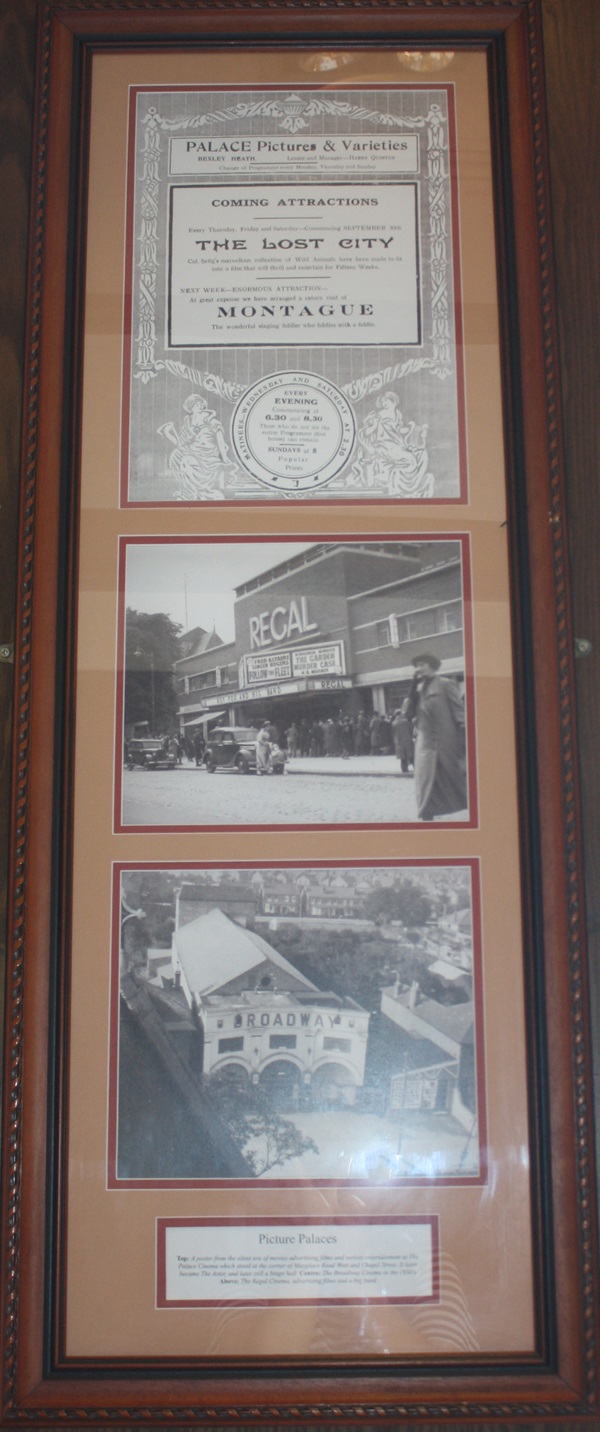
Photographs and text about The Red House.
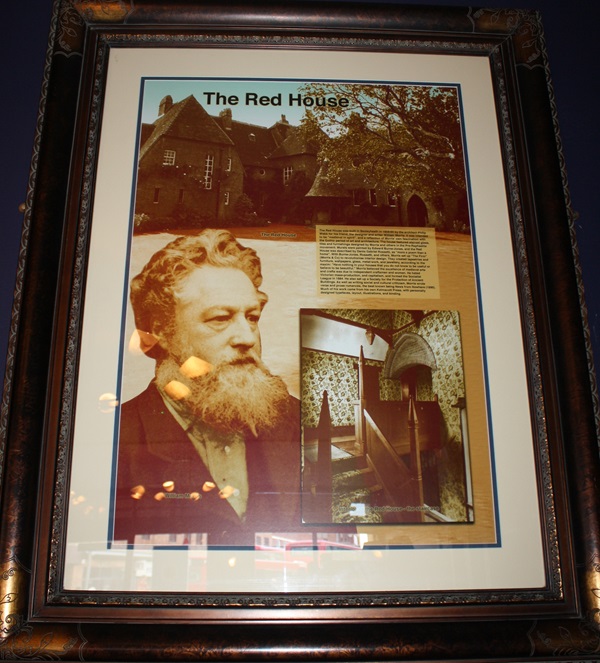
The text reads: The Red House was built in Bexleyheath in 1859-60 by the architect Phillip Webb for his friend, the designer and writer William Morris. It was intended to be “medieval in spirit”, and a reflection of Morris’ own fascination with the Gothic period of art and architecture. The house featured stained glass tiles and furnishings designed by Morris and others in the Pre-Raphaelite movement. Murals were painted by Edward Burne- Jones, and the Red House was described by Dante Gabriel Rossetti, as “more a poem than a home”. With Burne-Jones, Rossetti, and others, Morris set up “The Firm” (Morris & Co) to revolutionise interior design. They created tapestries and furniture, wallpapers, glass, metal-work, and jewellery, according to the maxim: “Have nothing in your house that you do not know to be useful or believe to be beautiful”. Morris believed the excellence of medieval arts and crafts was due to independent craftsmen and women. He hated Victorian mass-production, and capitalism, and formed the Socialist League in 1884. He also set up a society for the Protection of Ancient Buildings. As well as writing social and cultural criticisms, Morris wrote verse and prose romances, the best known being News from Nowhere (1890). Much of his work came from his own Kelmscott Press, with personally designed typefaces, layout, illustrations and binding.
External photograph of the building – main entrance.

If you have information on the history of this pub, then we’d like you to share it with us. Please e-mail all information to: pubhistories@jdwetherspoon.co.uk